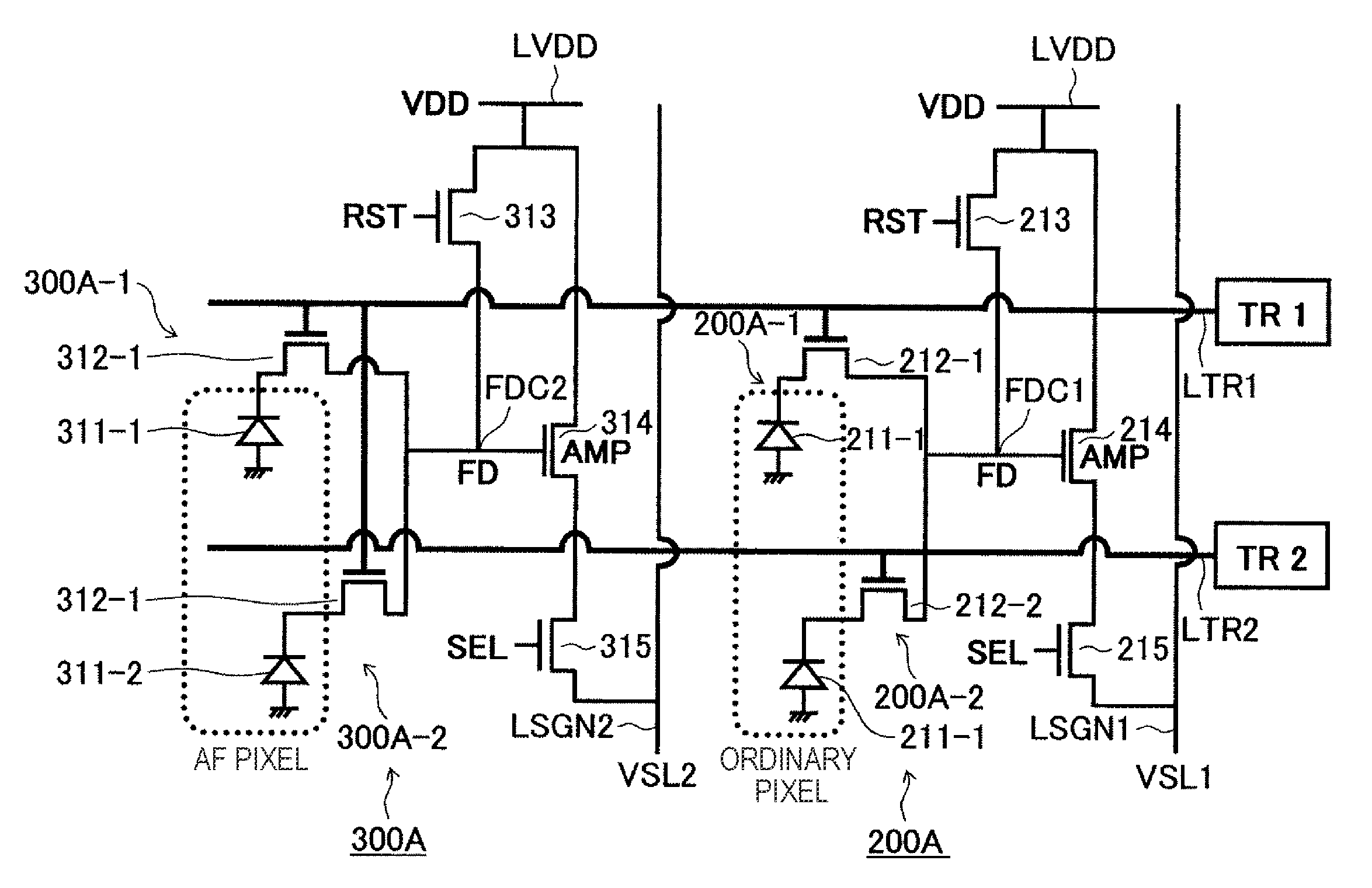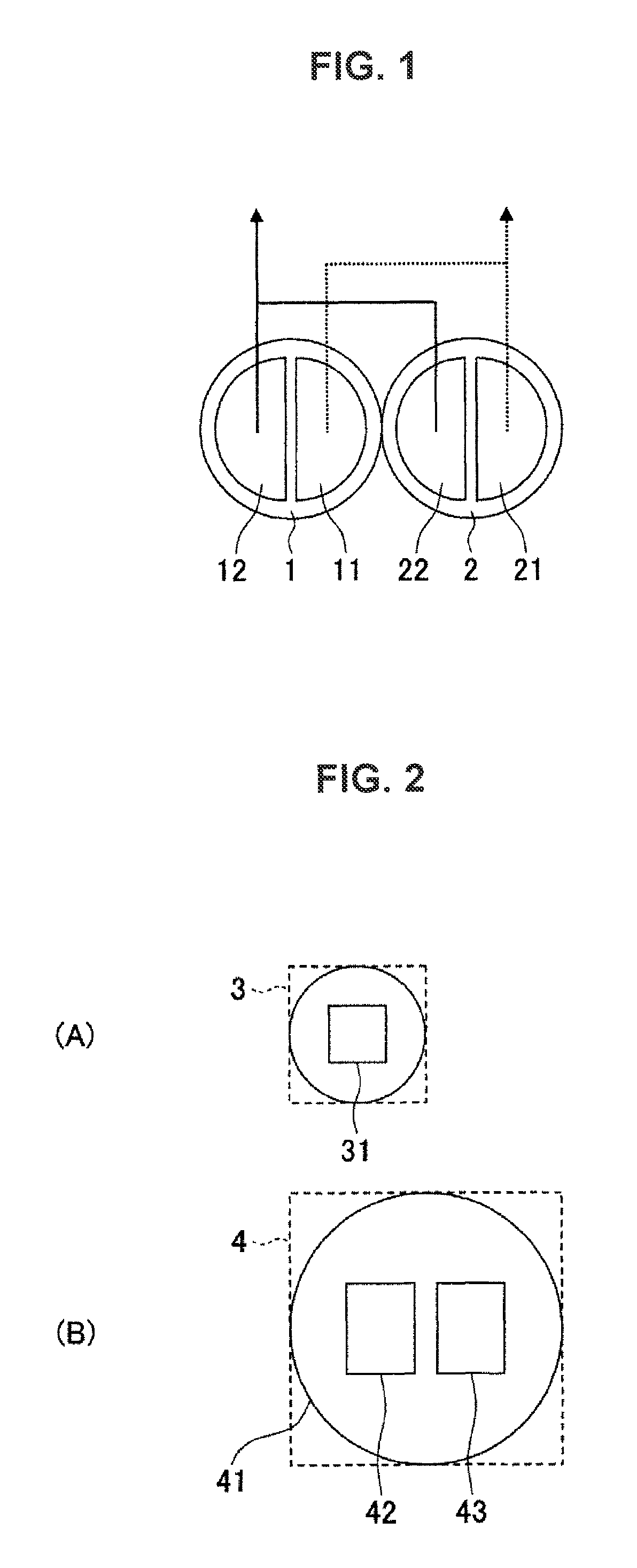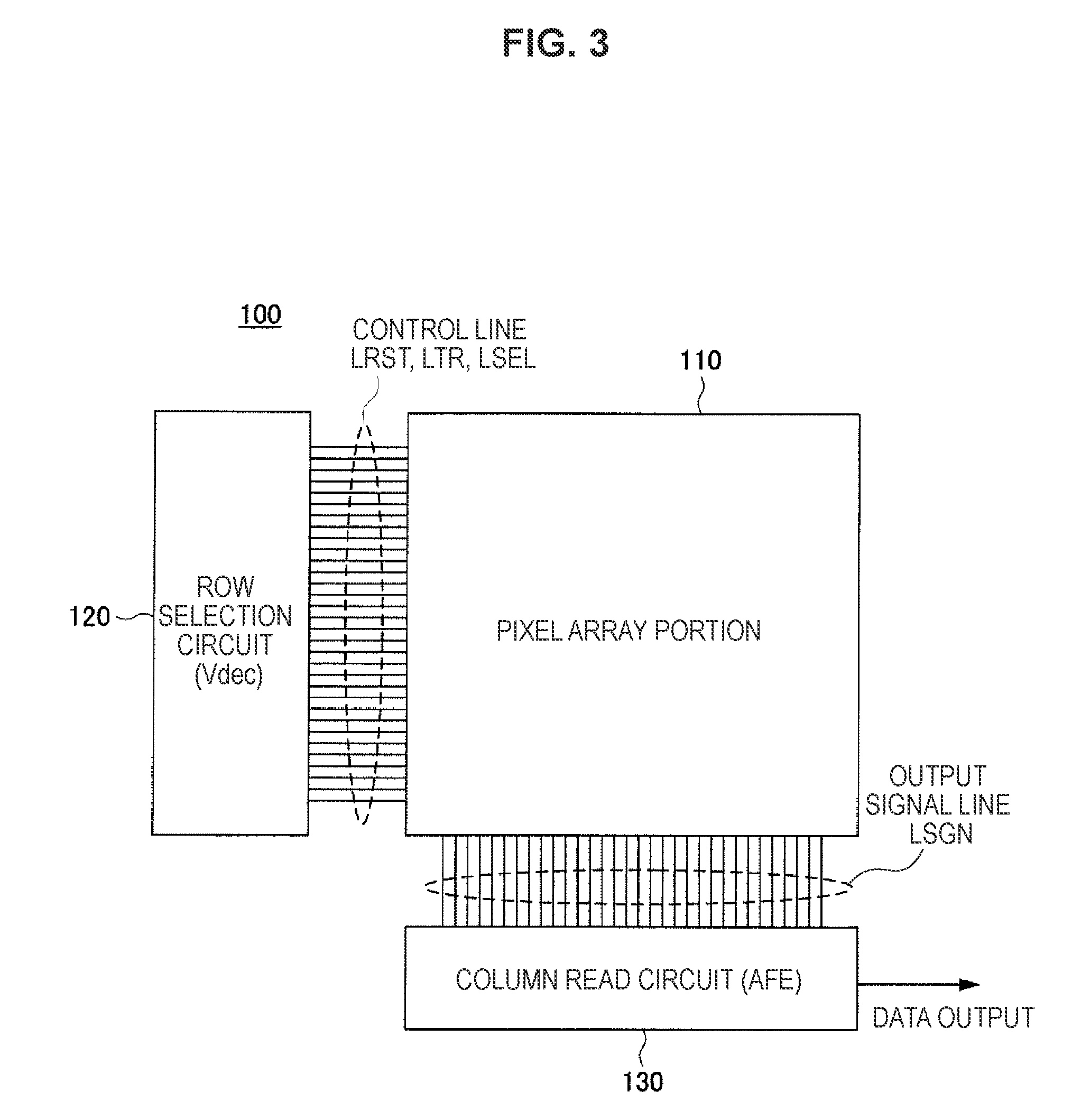Solid-state image sensor and camera system
a solid-state image sensor and camera system technology, applied in the field of solid-state image sensors, can solve the problems of deteriorating conversion efficiency, reducing sensitivity during low illumination, and suffering of above-described technologies, so as to suppress deterioration in image quality, increase power consumption, and improve focus detection accuracy during low illumination
- Summary
- Abstract
- Description
- Claims
- Application Information
AI Technical Summary
Benefits of technology
Problems solved by technology
Method used
Image
Examples
first embodiment
2. First Embodiment
[0188]FIGS. 6(A) and 6(B) are diagrams illustrating a configuration example of vertical 2-pixel-sharing as a first embodiment of the present technology.
[0189]FIG. 6(A) illustrates a vertical 2-pixel-sharing pattern of ordinary imaging pixels, and FIG. 6(B) illustrates a vertical 2-pixel-sharing pattern of focus detection pixels.
[0190]The first embodiment illustrated in FIG. 6 illustrates a configuration of a vertical 2-pixel-sharing pattern that has the same pixel array as described with reference to FIG. 4. For ease of understanding, parts that are the same as in FIG. 4 are represented using the same reference numerals.
[0191]In FIG. 6, the photodiode (PD) photoelectric conversion unit, the floating diffusion layer FD, the gate electrodes, and the transfer control line LTR wires are simply illustrated.
[0192]Further, although for convenience the contacts connecting the FD layers and the wires are not illustrated, in order for the FD portions to be reset, the FD por...
second embodiment
3. Second Embodiment
[0201]FIGS. 7 and 8 are diagrams illustrating a configuration example of a 2-pixel-sharing transfer wire as a second embodiment of the present technology.
[0202]FIG. 7 illustrates a laminate structure of an FD-layer-sharing imaging pixel and focus detection pixel. FIG. 8 schematically illustrates a wire connection in the laminate structure illustrated in FIG. 7.
[0203]Focus detection pixels 300-1 and 300-2 are configured so that photoelectric conversion units PD321 and PD322, transfer gates AFTRG321 and AFTRG322, and a shared floating diffusion layer FD321 are formed on a semiconductor substrate (silicon substrate) 321.
[0204]The transfer gates AFTRG321 and AFTRG322 are raised by a contact CT321 and connected to an intermediate electrode layer 322, which is a first metal layer of an upper layer.
[0205]This intermediate electrode layer 322 is itself raised by a contact CT322 and connected to a transfer control line LTRG1 that is formed from a second metal layer 323 of...
third embodiment
4. Third Embodiment
[0218]FIG. 11 is a diagram illustrating a 4-pixel-sharing pixel array example as a third embodiment of the present technology.
[0219]FIG. 11 illustrates a 2×2-pixel-sharing (4-pixel unit) case.
[0220]Ordinary imaging pixels 200-1 to 200-4, which include photoelectric conversion units PD221 to PD224, are configured so that when a pulse is input in the order of TR1→TR2→TR3→TR4 to the transfer control lines LTR1, LTR2, LTR3, and LTR4, transfer gates TRG1 to TRG4 are turned on / off in order.
[0221]Based on this operation, the signals from the pixels can be read pixel by pixel.
[0222]In the example illustrated in FIG. 11, the focus detection pixels 300-1 to 300-4 are configured so that the transfer gate is connected to only the transfer control line LTR2.
[0223]When a pulse as the transfer control signal TR2 is applied to the transfer control line LTR2, the transfer gates of the four (2×2) focus detection pixels 300-1 to 300-4 are simultaneously turned on, and four pixels wo...
PUM
 Login to View More
Login to View More Abstract
Description
Claims
Application Information
 Login to View More
Login to View More - R&D
- Intellectual Property
- Life Sciences
- Materials
- Tech Scout
- Unparalleled Data Quality
- Higher Quality Content
- 60% Fewer Hallucinations
Browse by: Latest US Patents, China's latest patents, Technical Efficacy Thesaurus, Application Domain, Technology Topic, Popular Technical Reports.
© 2025 PatSnap. All rights reserved.Legal|Privacy policy|Modern Slavery Act Transparency Statement|Sitemap|About US| Contact US: help@patsnap.com



